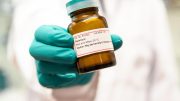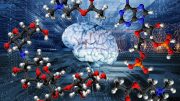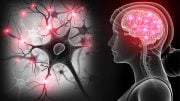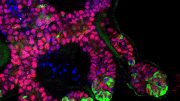
Using AI technology, researchers have identified a promising treatment for cystinosis, a rare kidney disorder, by repurposing the existing drug rapamycin. The study revealed a link between the disease and the mTORC1 protein, which rapamycin has shown to effectively regulate in cell and organism models, thereby restoring lysosomal activity and cellular functions. Further clinical studies are needed to validate these results.
Artificial intelligence is becoming increasingly important in drug discovery. Advances in the use of Big Data, learning algorithms and powerful computers have now enabled researchers at the University of Zurich (UZH) to better understand a serious metabolic disease.
Cystinosis is a rare lyosomal storage disorder affecting around 1 in 100,000 to 200,000 newborns worldwide. Nephropathic (non-inflammatory) cystinosis, the most common and severe form of the disease, manifests with kidney disease symptoms during the first months of life, often leading to kidney failure before the age of 10.
“Children with cystinosis suffer from a devastating, multisystemic disease, and there are currently no available curative treatments,” says Olivier Devuyst, head of the Mechanisms of Inherited Kidney Disorders (MIKADO) group and co-director of the ITINERARE University Research Priority Program at UZH.
The UZH researchers worked with Insilico Medicine, a company that uses AI for drug discovery, to uncover the underlying cellular mechanism behind kidney disease in cystinosis. Leveraging model systems and Insilico’s PandaOmics platform, they identified the disease-causing pathways and prioritized therapeutic targets within cystinosis cells. Their findings revealed a causal association between the regulation of a protein called mTORC1 and the disease.
Alessandro Luciani, one of the research group leaders, explains: “Our research showed that cystine storage stimulates the activation of the mTORC1 protein, leading to the impairment of kidney tubular cell differentiation and function.”
Promising drug identified for treatment
As patients with cystinosis often require a kidney transplant to restore kidney function, there is an urgent need for more effective treatments. Utilizing the PandaOmics platform, the UZH research team, therefore, embarked on a search for existing drugs that could be repurposed for cystinosis. This involved an analysis of the drugs’ structure, target enzymes, potential side effects and efficacy in the affected tissues. The already-licensed drug rapamycin was identified as a promising candidate for treating cystinosis. Studies in cell systems and model organisms confirmed that treatment with rapamycin restored the activity of lysosomes and rescued the cellular functions.
Olivier Devuyst and Alessandro Luciani are optimistic about future developments: “Although the therapeutic benefits of this approach will require further clinical investigations, we believe that these results, obtained through unique interdisciplinary collaboration, bring us closer to a feasible therapy for cystinosis patients.”
Study participants
Scientists from the University of Zurich (UZH), the Faculty of Medicine at UCLouvain in Brussels, the Microsoft Research-University of Trento Centre for Computational and Systems Biology, and the company Insilico Medicine were involved in the study. The USA’s Cystinosis Research Foundation and the Swiss National Science Foundation (SNSF) provided funding for the study.
Reference: “Lysosomal cystine export regulates mTORC1 signaling to guide kidney epithelial cell fate specialization” by Marine Berquez, Zhiyong Chen, Beatrice Paola Festa, Patrick Krohn, Svenja Aline Keller, Silvia Parolo, Mikhail Korzinkin, Anna Gaponova, Endre Laczko, Enrico Domenici, Olivier Devuyst and Alessandro Luciani, 14 July 2023, Nature Communications.
DOI: 10.1038/s41467-023-39261-3









Be the first to comment on "Outsmarting Cystinosis: AI-Led Discovery Brings Hope for Patients With Lyosomal Storage Disease"